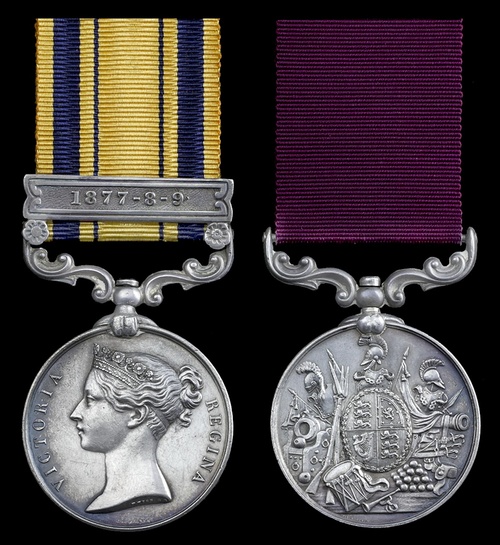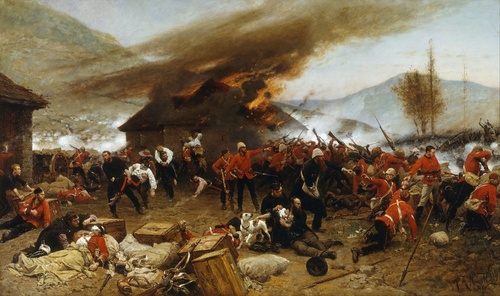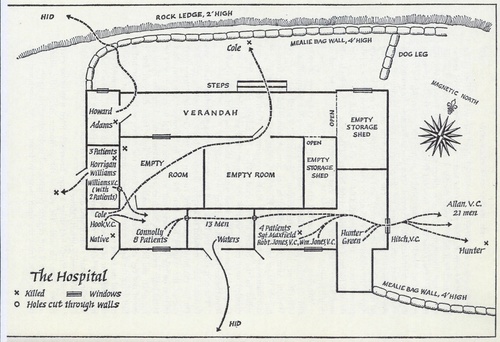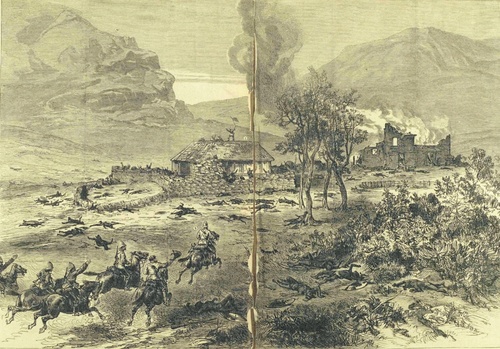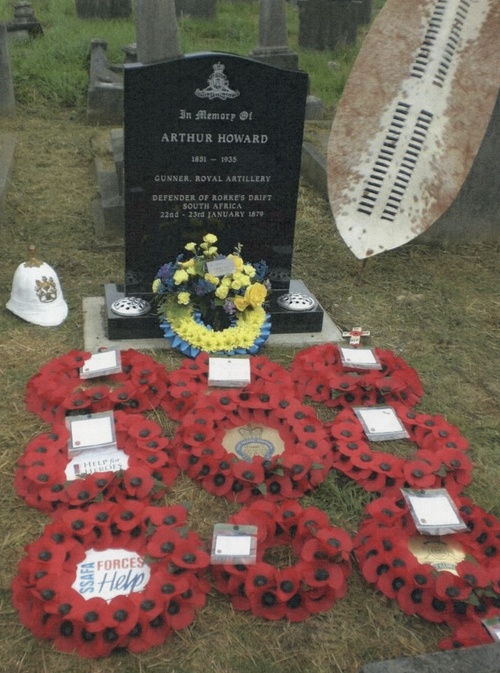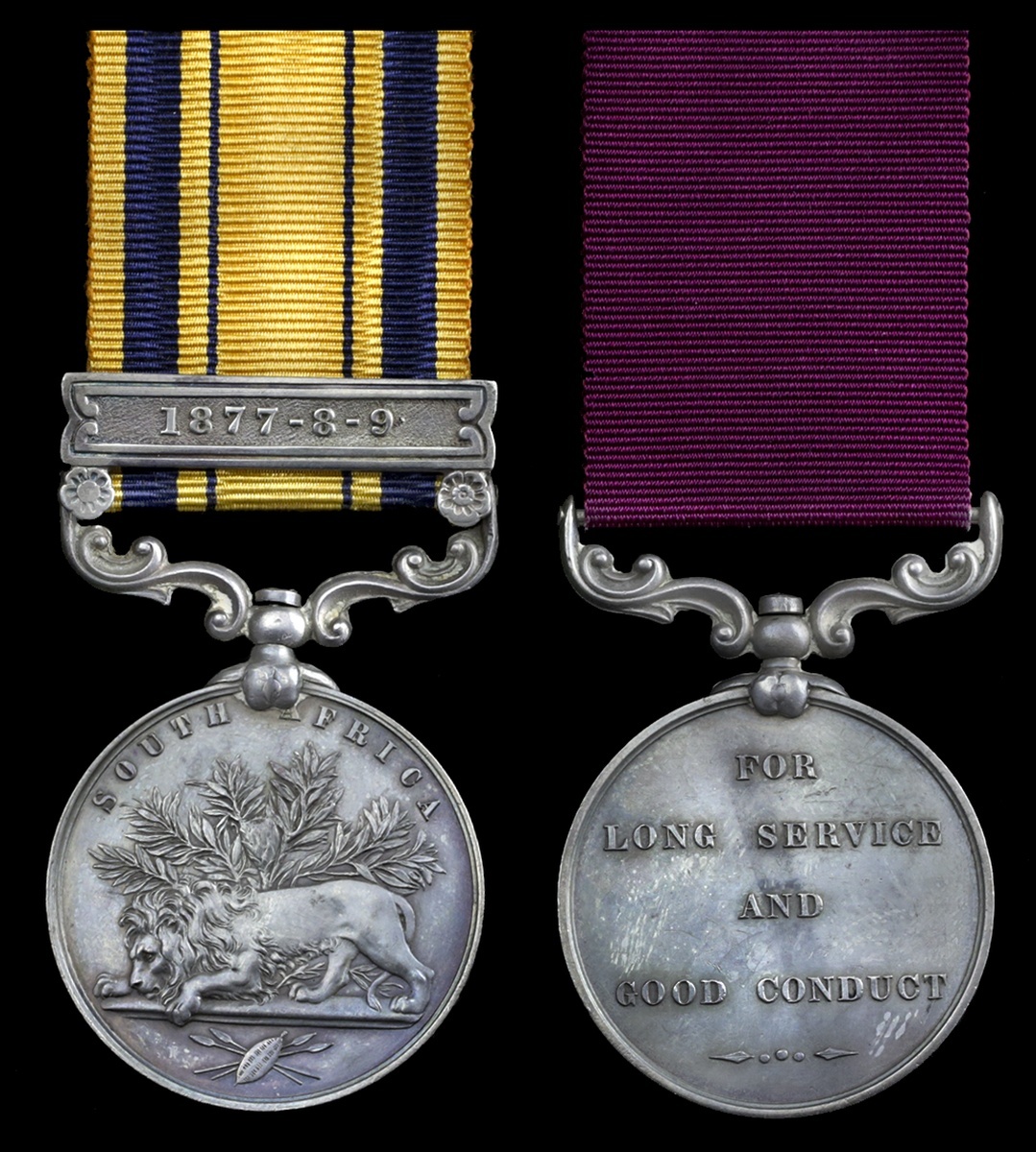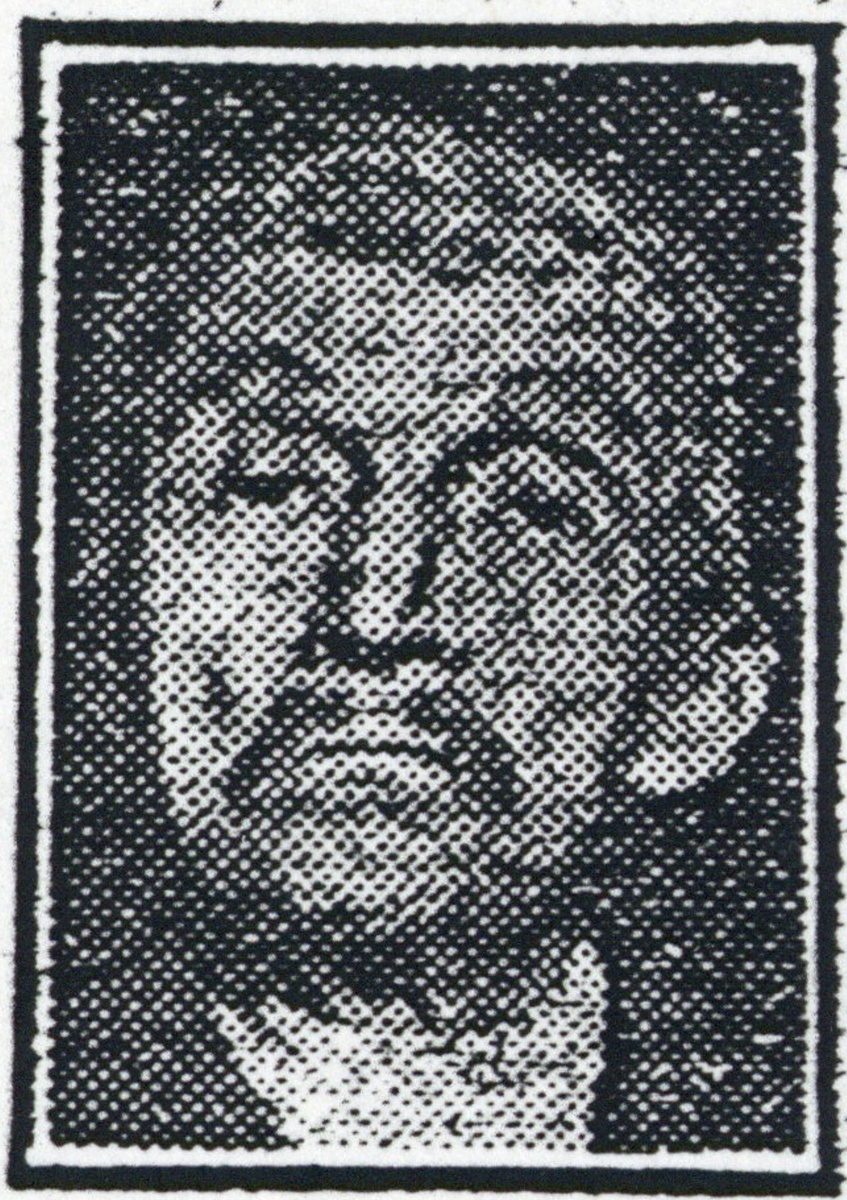Auction: 19002 - Orders, Decorations and Medals
Lot: 278
RORKE'S DRIFT - THE GREATEST DEFENCE OF ALL
There can surely be no more inspiring tale than that of 'the few' who found themselves at the former mission station of Rorke's Drift near the Buffalo River, Natal Province on 22-23 January 1879. It goes without saying that to date no action in British military history has eclipsed the feats performed, neither in terms numerical disadvantage - at least 40 to 1 - or the level to which the engagement has resonated through the ages.
When dawn broke on 23 January, the scene was of utter desolation, the bodies of at least 351 Zulu warriors littering the ground. What the defenders had faced - and survived - seems almost impossible to surpass. That they stood firm remains a testament to their accumulated bravery, resiliance and presence of mind.
The medallic awards for those present at Rorke's Drift are also worthy of mention, for no fewer than 11 Victoria Crosses and 4 Distinguished Conduct Medals were awarded for the actions of that famous day.
In terms of public perceptions the legacy of the defenders was perhaps sealed in history with the reception of Stanley Baker's film Zulu, which transported millions of transfixed viewers to the scene of battle in a 139-minute epic. I have little doubt that most of us have likewise been transfixed - perhaps inspired - at some point in our lives on a long Sunday afternoon watching that film.
Given their heroism, it seems strange that one particular story lay dormant for three-quarters of a century before emerging into the limelight. It is my privilege to recall the story of 'the luckiest man' of them all, Gunner Arthur Howard, Royal Artillery.
Marcus Budgen
May 2019
The historically important Zulu War pair awarded to Gunner A. Howard, 'N' Battery, 5th Brigade, Royal Artillery, one of just 4 members of the Royal Artillery present at the Defence of Rorke's Drift on 22-23 January 1879
Batman to Colonel A. Harness, C.B., Howard was hospitalised in a room on the western end of the veranda with Private D. Adams, 'D' Company, 2/24th; the pair barricaded and loopholed their room before gallantly holding off hundreds of warriors with volleys from their rifles
The hospital ablaze and Adams unwilling to follow, Howard escaped disaster via the veranda, dashing miraculously past the marauding Zulus, over the mealie bags and into cover: a terrifying night ensued - playing dead he avoided 'both Zulu assegais and Chard's volleys' but his prostrate body was trodden on by numerous warriors
When dawn broke, he emerged, stiff and frozen, the 'luckiest man' of Rorke's Drift. News of his remarkable story was afterwards re-kindled by the unveiling of Alphonse de Neuville's famous painting in Australia; so, too, by an erroneous report of his death
That sad event having occurred in the fullness of time, the gallant Howard - who had fallen on hard times and suffered from blindness - was buried in an unmarked grave. That travesty was finally amended in September 2012, when a headstone was erected over his grave, following a service of re-dedication - with full Military Honours - a service attended by none other than H.R.H. Prince Valekhata Shange of Zululand
South Africa 1877-79, 1 clasp, 1877-8-9 (3919. Gunr. A. Howard. 5th Bde. R.A.); Army L.S. & G.C., V.R., small letter reverse (135. Gunr. A. Howard. R.H.A.), nearly extremely fine, housed within a fitted wooden glazed case in which the awards have been stored for some considerable time (2)
Arthur Howard was born in 2 May 1851 at Eynsford, Kent on 2 May 1851 and, in common with his father, took work as an agricultural labourer after his education at Eynsford Village School.
Howard enlisted in the Royal Artillery in April 1871, being allocated number 3919, for initial service with the 14th Brigade. Having then served at home and been admitted to hospital on a number of occasions, he joined 5th Brigade on 1 August 1877.
Off to War
At this point, fate intervened in his story, for he was appointed as Batman to Major Arthur Harness, with whom he travelled to South Africa, landing in King Williamstown, Cape Colony Neither master nor Batman were pleased - for Harness had a clock stolen in transit, whilst Howard lost two sets of his uniform. Having remained together for the opening advance of the campaign, with Howard gaining frequent mention in Harness's diary, he was taken sick on 18 January 1879 and admitted to hospital at Rorke's Drift.
Invasion of Zululand takes up the story:
'On 22 January he [Howard] was recovering from fever in the converted hospital at Rorke's Drift. Major Henry Spalding, 104th Regiment, was in command of the station. He, knowing nothing of the events at Isandhlwana, rode to Helpmekaar in the afternoon. The command devolved upon Lieutenant John Chard, Royal Engineers, the senior officer present. About an hour after Spalding's departure Chard was startled by the first intimation of the disaster at Isandhlwana; he also learnt that an impi was moving in his direction. Dabulamanzi kaMpande, an impetuous brother of Cetshwayo had led two regiments round the back of Isandhlwana in an attempt to cut off the British troops' retreat. The fugitives, however, fled by another route, and so, fouled of his prey, Dabulamanzi - in defiance of his brother's orders - decided to attack at Rorke's Drift.
Chard elected to stand and fight rather than evacuate the garrison, which at once began to fortify the hospital and its surrounds, mainly with biscuit tins and mealie bags. The original lines of defences had to be drawn in when some of the non-regular troops departed, thus leaving Chard with about one hundred and forty men, of whom thirty were hospital patients.
Gunner Howard shared the left-front corner room of the hospital building with Private Adams of the 2nd Battalion, 24th Regiment. A window opened onto the front and a door onto the veranda. The men barricaded these and knocked loopholes into the side walls, through which they fired when the Zulu began to attack at about 4.30 p.m.'
A letter penned by Howard on 7 February gives his own take on the opening shots:
'Just a line to let you know that I am still in the land of the living. I daresay before you get this you will have heard of the massacre [Isandhlwana]. They killed just half of our battery and nearly all the 1/24th Regiment. The awful black devils watched the General out of the camp, and then, as soon as his command had got clear away, they came down like bees out of a hive, and they was awful slaughter.
I was not in the camp, for I had the diarrhoea and was left behind at a place they call Rorke's Drift, where there was a temporary hospital. One company of the 24th, ninety strong, was left to protect it.
Well, the same day as the other affair happened about which I have just told you four thousand or so of them paid us a visit at the hospital. But we had about three hours' notice and plenty of sacks of oats with which we threw up a temporary fortification round this old place. When they Zulus arrived, about five in the evening, they did not find it quite as comfortable as they thought, for they had expected us that they would have nothing to do but assegai us at their pleasure and possess the place, but we had knocked holes through the house to fire through. Boxes of ammunition were placed behind us.
Forty men were in the hospital, and nearly all able to fight when it came to the pinch. I had a rifle belonging to the Sergeant which was too ill to use it. The Zulus made short work of him [Sergeant R. Maxfield, 2nd Battalion, 24th Regiment].
When waiting for the approach of the enemy we would see them half a mile before they got to us.
When I beheld the swarm I said to myself:
"All up now."
But I was wrong, and we all agreed to fight till only two were left, and these were to shoot themselves. Well, we all got behind our rampart, and when the Zulus were about four hundred yards off, like a wall coming on, we fired the first volley. The rifles being Martini-Henrys our firing was very quick, and, when struck by bullets the niggers would give a spring in the air and fall flat down. The enemy advanced to within three hundred yards, and then it did not seem healthy to come any nearer, so we continued to fire at them until it got dark. Then, as the roof of the hospital was of thatch, they crept up and set it on fire. When the flames burst out it was all the better for us, for we could see the niggers and their movements, though they could not see us. Didn't we give it to them, anyhow!'
With the roof ablaze, Howard and Adams were alone in their room, with hundreds of Zulus assembling to attack the front wall. At the final moment, when it was clear the roof was all but failing, a break would have to be made to escape. The Washing of the Spears picks up his position:
'A few men were still alive in other rooms. The roof was about to go, and Howard opened the door a crack to peer out. The Zulus on the veranda were all pressed in the far corner, taking shelter from the storehouse fire, and none was watching behind. Adams refused to leave, so Howard pulled the door open, hurtled out across the veranda and sprang over the mealie bags into the welcome darkness below the ledge. He rolled through the shrubbery, fetching up against four dead horses that the Zulus had killed tethered in the trees. Huddling amongst their legs, he lay still, cautiously pulling a few broken twigs over his body. Zulus running forward hopped over him; a sow ran by and a passing warrior speared it. Presently a bereft piglet appeared, squealing piteously and nuzzling the carcass lying across Howard's legs.
The frantic Gunner tried to shoo it away, poking at it with a stick, but the shoat would not leave. Howard gave up the effort and concentrated on feigning death. Zulus stepped on him several times. Hours later, when the light of the flaming roof subsided, he wriggled off in the darkness to hide in a clump of bushes several hundred yards away.
Michael Glover's Rorke's Drift lends further detail:
'The luckiest man was Gunner Arthur Howard. As he emerged he miraculously escaped both Zulu assegais and Chard's volleys. In utter confusion [and no doubt dazed by his fever] he failed to turn right towards his comrades but dashed straight ahead and vaulted the front wall of mealie bags. He was equally exposed to the Zulu assegais and the English bullets. His greatest anxiety was to cover the red strike of his overalls which seemed to show very clearly in the darkness.'
When dawn broke and the defence was confirmed, Howard was discovered by one of Chard's scouts just after 5 a.m., his survival an amazement to his comrades. Re-united with Harness some hour later, their bond remained resolute. It is also likely that Howard is depicted in Crealock's illustration of the relief force, as the man sat second on the left of the wall (London Illustrated News, 8 March 1879, refers). Indeed, the officer gained permission for the pair to take leave in England. Posted together for service at Hillsborough Barracks, Sheffield, they attended a charity football match played at Bramall Lane. Raising funds for the orphans and soldiers of Isandlwana and Rorke's Drift, teams of English and Scottish internationals ensured they were appropriated 'dressed' for an England Vs Zulus match.
False identity - Journey's end
Travelling with Harness for the remainder of his career, Howard was stationed at Woolwich in 1882, where he married and had a daughter named Elsie. Tragically his wife died aged just 31 in August 1889, leaving Howard with a young daughter whilst he remained on active service. Forced to foster his daughter to his sister-in-law in Sheffield, Harness returned to Woolwich but was discharge on his own request after 19 years in the service on 30 May 1890.
He moved to Sheffield to assist his daughter and is latterly known to have returned to Woolwich as an ammunition case examiner at the Royal Arsenal, by which point Elsie had moved nearby. Retiring from his job, Howard lived out his remaining years, sadly having lost his sight, as a lodger of Walter Tanner at Harton Street, Deptford, London.
News from Australia in early 1930 came as something as a shock, for under unknown circumstanced the Daily Mirror printed reports of his death in Sydney on 14 Feburary. He was swift to reply to the news, together with his unknown feature in Alphonse de Neuville's picture that remains to this day on display at the Art Gallery of New South Wales:
'I cannot understand how there can be any mistake. I have been living in Kent now for forty years and I have certainly never been to Australia.
As you can see for yourself, I am quite alive and able to tell you all about the battle. I was at Ulundi, too, where we beat the Zulu armies in forty minutes. My relatives tell me that the photograph in the papers is of me alright.
I never received a wound of any sort from an assegai, or from anything for that matter, though I was in the hospital with fever when the Zulus burned it during the battle.
At Rorke's Drift 4,000 Zulus attacked eighty-six men, eighty of them South Wales Borderers under the command of Lieutenants Chard and Bromhead. Half of the men were in a small farmhouse which had been turned into a hospital.
How Sydney Art Gallery can have a picture of me leaving the burning hospital carrying another man over my shoulder is more than I can understand. It certainly cannot be a picture of me. It was as much as I could do to leave the building myself, without carrying anyone else.
There were only eighty-six of us all told, and I don't think it is at all probable that there was another Arthur Howard among us, though of course it is possible. I knew most of the men, and I never met anyone of my own name.'
There was not anyone else at Rorke's Drift so the Australian individual must be considered at fault in records or perhaps an imposter.
It is however the opinion of the cataloguer that the attribution to Howard in Alphonse de Neuville's painting seems perfectly plausible. The artist must surely have studied the individuals of note during the defence closely and perhaps noted the story of Howard. Why would he not use his artistic licence to include him in his epic painting in order that the story not be lost to time - knowing exactly how the fortunes of old soldiers in that era varied widely.
Having lived out his final years as the blind lodger of Walter Tanner, Howard died aged 84 at St. Alfrege's Hospital, Vanbrugh Hill, Greenwich on 15 July 1935. He was buried in an unmarked grave in Brockley Cemetery, Lewisham paid for by Tanner on 20 July.
Re-dedicated and remembered
It would be a little over 75 years later that Howard's story once more returned to the headlines, for, following a spirited fundraising appeal by the 'Gunner Howard Memorial Fund', his grave was finally marked by a headstone.
It was on 16 September 2012 that his re-dedication service took place, taken by Major The Reverend A. Dalton. Honoured guests included His Royal Highness Prince Valekhata Shange of Zululand, descendants of two Rorke's Drift V.C. winners, Chelsea Pensioners, local Army and Air Cadets, service veterans and Drum-Major T. Needham, Royal Marines, who started the Memorial Fund and who carried these very Medals for the ceremony. Wreaths were laid and The Last Post was played.
Footage of the re-dedication is available via:
https://www.youtube.com/watch?v=hExg9lPkMRA
Note:
Howard held three regimental numbers, No. 135 (Depot), No. 2077 (5 Brigade) and No. 3919 (2 Brigade), confirming those which are observed on his Medals. Despite Howard being listed on the published roll under No. 2077 with Medal & clasp '1879', Colonel Harness is also in receipt of Medal & clasp '1877-8-9'.
Sold together with an Order of Service from the re-dedication service, and full copied service record and research, which includes a portrait photograph of the recipient in old age.
Reference sources:
The Washing of the Spears, Donald R. Morris, 1965.
Invasion of Zululand, 1879: Anglo-Zulu War experiences of Arthur Harness; John Jervis, 4th Viscount St. Vincent; and Sir Henry Buller, Brenthurst Press, 1979.
Rorke's Drift, Michael Glover, 1997.
The South African Campaign of 1879, J. P. Mackinnon & S. H. Shadbolt, 1973.
http://www.1879zuluwar.com/t5884-re-dedication-to-arthur-howard-gunner-royal-artillery-16th-sep-2012
Subject to 20% VAT on Buyer’s Premium. For more information please view Terms and Conditions for Buyers.
Sold for
£38,000
Starting price
£38000

